There was a time when most of us dreamt of a visit to the Americas. It was a once-in-a-lifetime trip that few could afford. Now everything has changed – North America is within the range of most of our pockets, and South America is more accessible than ever before.
North America
Taking the USA, the top five states for variety of birds are, Texas, California, Arizona, New Mexico and Florida. Of these, all but New Mexico are widely available as commercial bird tours, and if you prefer doing it yourself, then all five are easily arranged through your travel agent. Here are some ideas for holidays:
Texas
Best Time to Visit: April
Target: 300 species
An ideal visit to Texas should coincide with the spring migration from early April onwards. The dilemma here is that as the month progresses, so the migration gets better, but other birds such as Whooping Crane become more difficult to see. The best itinerary should focus on the southern part of the state, probably commencing at Houston, and working your way westwards along the coast. The Whooping Cranes winter at Aransas National Wildlife Refuge and are not guaranteed after 1 April. 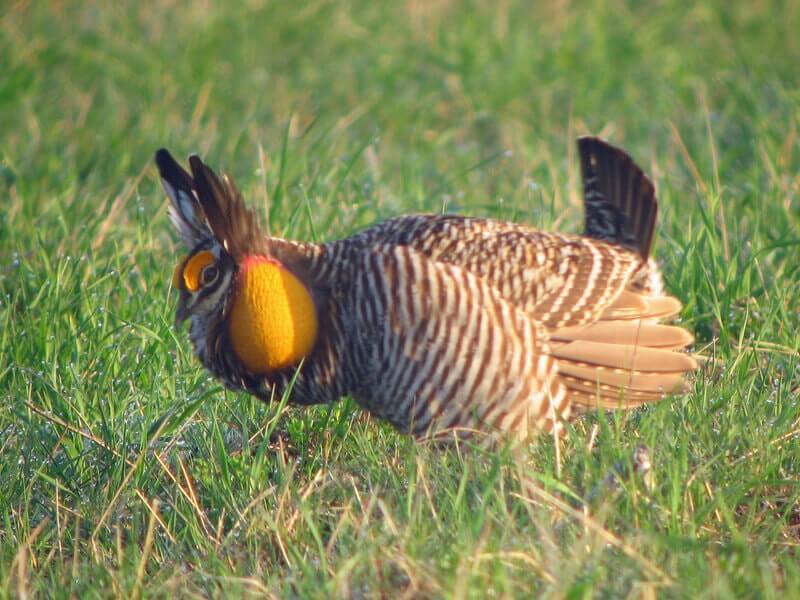 Not far away you should visit the Attwater National Wildlife Refuge to see the rare Greater Prairie Chicken. As you move further west the migration will become more obvious, with flocks of Swainson’s and Broad-tailed Hawks passing overhead. The whole of the Rio Grande Valley is magical – full of birds, many of them stragglers from Mexico at the their northern limits. As you work your way northwards along the Valley, the habitats change, and so the birds as the Mexican influence diminishes. Having reached Rio Grande City, your journey should take you back to Houston via the Edwards Plateau.
Not far away you should visit the Attwater National Wildlife Refuge to see the rare Greater Prairie Chicken. As you move further west the migration will become more obvious, with flocks of Swainson’s and Broad-tailed Hawks passing overhead. The whole of the Rio Grande Valley is magical – full of birds, many of them stragglers from Mexico at the their northern limits. As you work your way northwards along the Valley, the habitats change, and so the birds as the Mexican influence diminishes. Having reached Rio Grande City, your journey should take you back to Houston via the Edwards Plateau.
Other Target Species Include: Tropical Parula Warbler, Least Grebe, White-tipped Dove, Red-billed Pigeon, Plain Chachalaca, Pauraque, Long-billed Thrasher, Altimara Oriole, Hooded Oriole, Audubon’s Oriole, Olive Sparrow, Green Jay, Brown Jay, Cave Swallow, Golden-cheeked Warbler, Black-capped Vireo, Red-cockaded Woodpecker, Couch’s Kingbird, Gray Hawk, Elf Owl, Ferruginous Pygmy Owl, Pyrrhuloxia, Chihuahuan Raven, Great Kiskadee, Golden-fronted Woodpecker, Groove-billed Ani, Montezuma Quail and White-tailed Hawk.
California
Best Time to Visit: April/May
Target: 250 species
In size this state is massive – 780 miles long and up to 350 miles wide. It also has many extremes – the biggest trees, the highest mountain and the lowest desert in the USA. The state is also divided by the great Sierra Nevada. Due to its size, you will probably need to choose north or south California for your visit. By far the greatest variety lies in the south, with the influence of Mexico being very important. A typical trip might start in San Diego with a pelagic offshore, then south east to the Imperial Valley and Salton Sea, north to the White Mountains and then the Yosemite National Park. 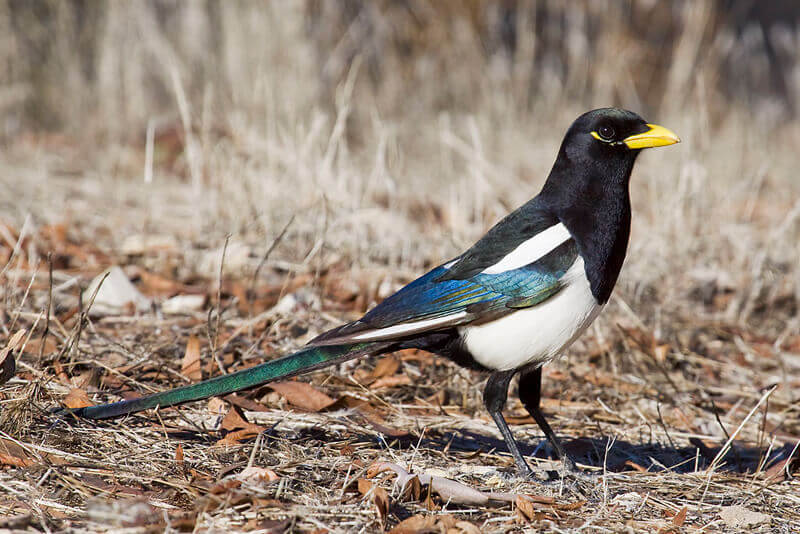 Over on the coast at Monterey, another pelagic should be attempted for those Pacific seabirds such as Pink-footed and Black-footed Shearwaters, and then on to San Francisco. California has one endemic – the Yellow-billed Magpie, but has several near-endemics to find.
Over on the coast at Monterey, another pelagic should be attempted for those Pacific seabirds such as Pink-footed and Black-footed Shearwaters, and then on to San Francisco. California has one endemic – the Yellow-billed Magpie, but has several near-endemics to find.
Other Target Species Include: Gambel’s Quail, White-winged Dove, Costa’s Hummingbird, Broad-tailed Hummingbird, Gila Woodpecker, Ladder-backed Woodpecker, Cassin’s Kingbird, Gray Flycatcher, Verdin, Black-tailed Gnatcatcher, Bendire’s Thrasher, Crissal Thrasher, Le Conte’s Thrasher, Phainopepla, Bell’s Vireo, Gray Vireo, Virginia’s Warbler, Lucy’s Warbler, Abert’s Towhee, Black-throated Sparrow, Brewer’s Sparrow, Bronzed Cowbird, Scott’s Oriole, Hepatic Tanager, California Gull, Heermann’s Gull, Pigeon Guillemot, Allen’s Hummingbird, California Gnatcatcher, Le Conte’s Thrasher and California Thrashers, California Towhee and Lawrence’s Goldfinch.
Arizona
Best Time to Visit: Late May/early June or July/August
Target: 210 species
Again, the influence of Mexico is very marked in this state, and at least one bird tour company combines it with Texas. However, Arizona has a great deal to offer, and I would recommend at least two weeks here, focusing on the south eastern corner. Rising above the desert floor are several mountain chains, including the Santa Catalinas, the Huachucas, the Chiricahuas and the Pinalenos. 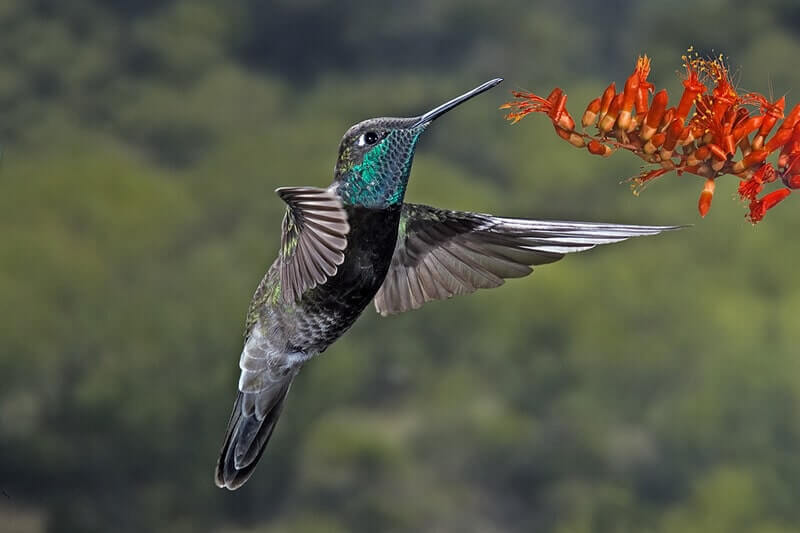 Many of the most intriguing birds are found in these remote places including Blue-throated and Magnificent Hummingbirds, Elegant Trogon, Bridled Titmouse, Sulphur-bellied Flycatcher and Red-faced Warbler. Be sure to include the San Rafael Grasslands and Sonoran Desert on your itinerary also.
Many of the most intriguing birds are found in these remote places including Blue-throated and Magnificent Hummingbirds, Elegant Trogon, Bridled Titmouse, Sulphur-bellied Flycatcher and Red-faced Warbler. Be sure to include the San Rafael Grasslands and Sonoran Desert on your itinerary also.
Other Target Species Include: Thick-billed Kingbird, Dusky-capped Flycatcher, Greater Pewee, Strickland’s Woodpecker, Gila Woodpecker, Broad-billed Hummingbird, Coues’ Flycatcher, Rose-throated Becard, Northern Beardless Tyrannulet, Hooded Oriole, Black-chinned Sparrow, Albert’s Towhee, Botteri’s Sparrow, Hepatic Tanager, Olive Warbler, Grace’s Warbler, Crissal Thrasher, Benidire’s Thrasher and Mexican Chickadee.
Florida
Best Time to Visit: April/May or September/October
Target: 180 species
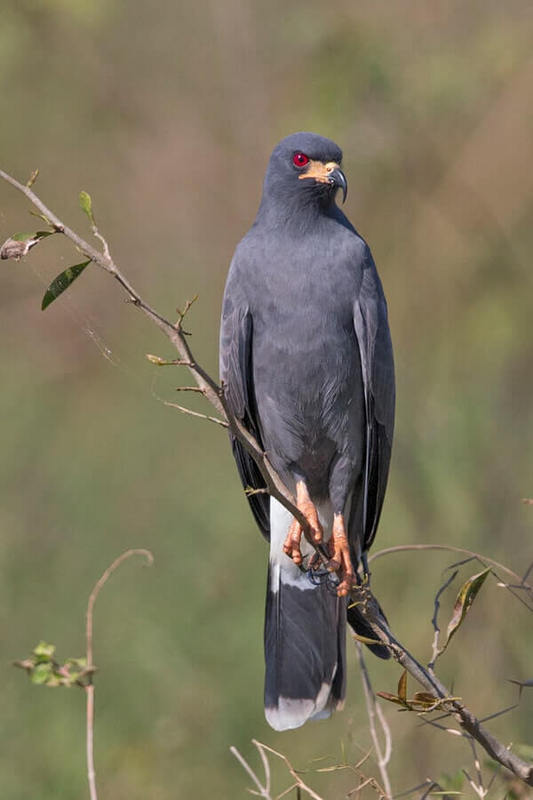 Every year one million people leave the United Kingdom for a holiday in Florida – the equivalent of a medium-sized town transferring there every two weeks. However, if you need to take a family with you, this could be the ideal holiday location. Most holidaymakers fly to Orlando, which is the site of Disney World, and is conveniently close to swamps which hold Snail Kites, and woodlands with a few Red-cockaded Woodpeckers. Travelling east to the coast, the Kennedy Space Centre is suitably close to the Merritt Island National Wildlife Refuge, which is an excellent network of coastal marshes. Moving south past Miami, the Everglades is an essential part of any visit, and provides several difficult and very localised species such as Mangrove Cuckoo and Black-whiskered Vireo. If time permits, you should spend a couple of days on the Keys. Finally, the west coast has good beaches (excellent for terns and waders) and reserves such as Corkscrew Swamp and Ding Darling Trail.
Every year one million people leave the United Kingdom for a holiday in Florida – the equivalent of a medium-sized town transferring there every two weeks. However, if you need to take a family with you, this could be the ideal holiday location. Most holidaymakers fly to Orlando, which is the site of Disney World, and is conveniently close to swamps which hold Snail Kites, and woodlands with a few Red-cockaded Woodpeckers. Travelling east to the coast, the Kennedy Space Centre is suitably close to the Merritt Island National Wildlife Refuge, which is an excellent network of coastal marshes. Moving south past Miami, the Everglades is an essential part of any visit, and provides several difficult and very localised species such as Mangrove Cuckoo and Black-whiskered Vireo. If time permits, you should spend a couple of days on the Keys. Finally, the west coast has good beaches (excellent for terns and waders) and reserves such as Corkscrew Swamp and Ding Darling Trail.
Other Target Species Include: Wood Stork, Roseate Spoonbill, White-crowned Pigeon, Crested Caracara, Swallow-tailed Kite, Limpkin, Bachman’s Sparrow, Scrub Jay, Gray Kingbird, Smooth-billed Ani, Short-tailed Hawk, Black Skimmer, and Magnificent Frigatebird.
South America
Within South America, there are more than 3,000 species to be seen, representing about a third of the world’s total range. Of these about 2,000 are found nowhere else. So be prepared for a shock when you visit this region – many of its family groups are dramatically different to anything seen in Europe or North America. In order of quantity, the best South American countries are Colombia, Peru, Brazil, Ecuador, and Venezuela. Here are some ideas for holidays:
Trinidad and Tobago
Best Time to Visit: November-February
Target: 220 species
As a gentle introduction to South American birding, a trip to these islands provides a combination of this, together with a colourful range of Caribbean species. Just 17 kilometres off the coast of Venezuela, Trinidad offers 246 breeding species whilst Tobago has just 87. 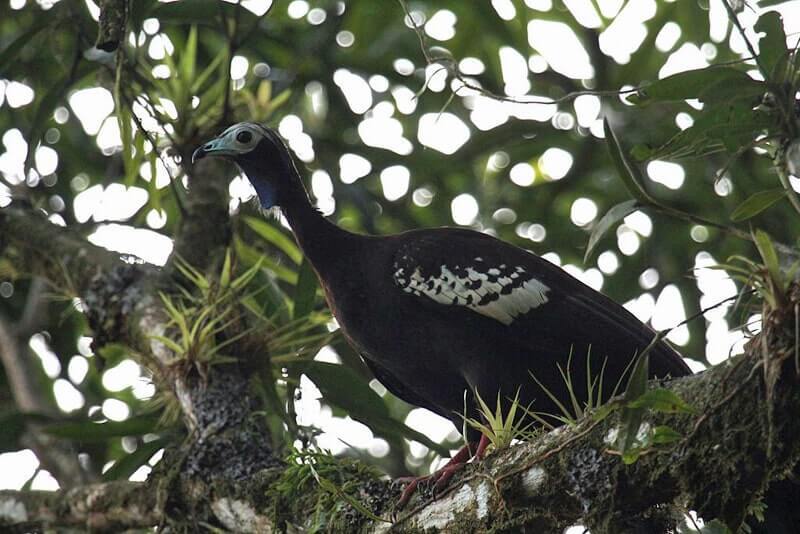 There are no real endemics on the islands – although some consider the endangered Trinidad Piping Guan to be a true species – but there are 44 endemic sub-species to consider. Most birds breed in the wettest period, from May to October, although a visit from September to March will result in many North American migrants being encountered. Important sites to visit include the Asa Wright Nature Centre (with over 20 species of hummingbird, honeycreeper and tanager to see from the hotel veranda), Caroni Swamp (complete with roosting Scarlet Ibises), and Nariva Swamp.
There are no real endemics on the islands – although some consider the endangered Trinidad Piping Guan to be a true species – but there are 44 endemic sub-species to consider. Most birds breed in the wettest period, from May to October, although a visit from September to March will result in many North American migrants being encountered. Important sites to visit include the Asa Wright Nature Centre (with over 20 species of hummingbird, honeycreeper and tanager to see from the hotel veranda), Caroni Swamp (complete with roosting Scarlet Ibises), and Nariva Swamp.
Other Target Species Include: Oilbird, Red-billed Tropicbird, Green-rumped Parrotlet, Venezuelan Flycatcher, Bare-eyed Thrush, Red-footed Booby, White-tailed Sabrewing, Silvered Antbird and Boat-billed Heron.
Falkland Islands
Best Time to Visit: November to March
Target: 50 species
Situated 500 kilometres off the South American coast, this group includes 200 islands. Much of the area is very difficult to cover due to boggy conditions. There are only two endemic species – the Falkland Flightless Steamer Duck and Cobb’s Pipit, although there are several Falklands races of other species such as Kelp Goose and Upland Goose. 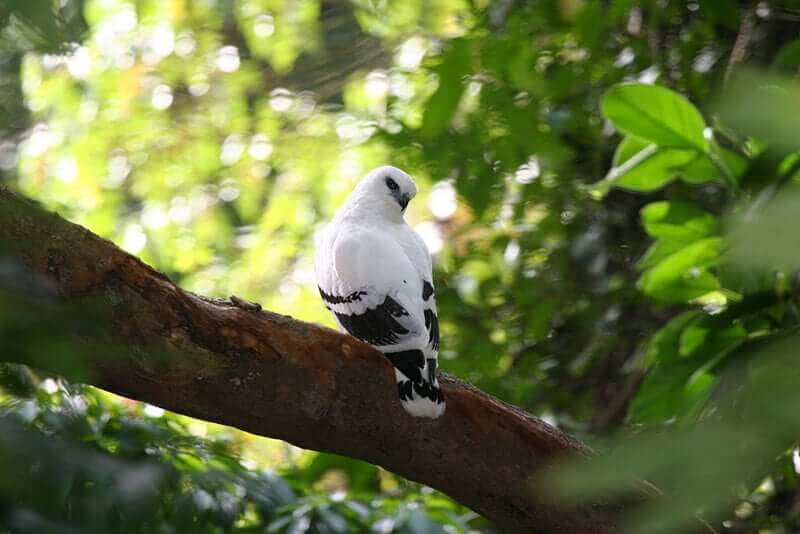 Travel to the Falklands is not that easy to arrange, and unless travelling from mainland South America, is via Ascension Island courtesy of the Ministry of Defence. Through several specialist tour operators and the Falkland Islands Tourist Office, departures can be arranged from Brize Norton.
Travel to the Falklands is not that easy to arrange, and unless travelling from mainland South America, is via Ascension Island courtesy of the Ministry of Defence. Through several specialist tour operators and the Falkland Islands Tourist Office, departures can be arranged from Brize Norton.
Other Target Species Include: King, Gentoo, Rockhopper, Macaroni and Megellanic Penguins, Black-browed Albatross, Southern Giant Petrel, Slender-billed and Fairy Prion, Shoemaker, Greater and Sooty Shearwater, Striated Caracara, Canary-headed Finch and Ruddy-headed Goose.
Galapagos Islands
Best Time to Visit: June to August
Target: 50 species
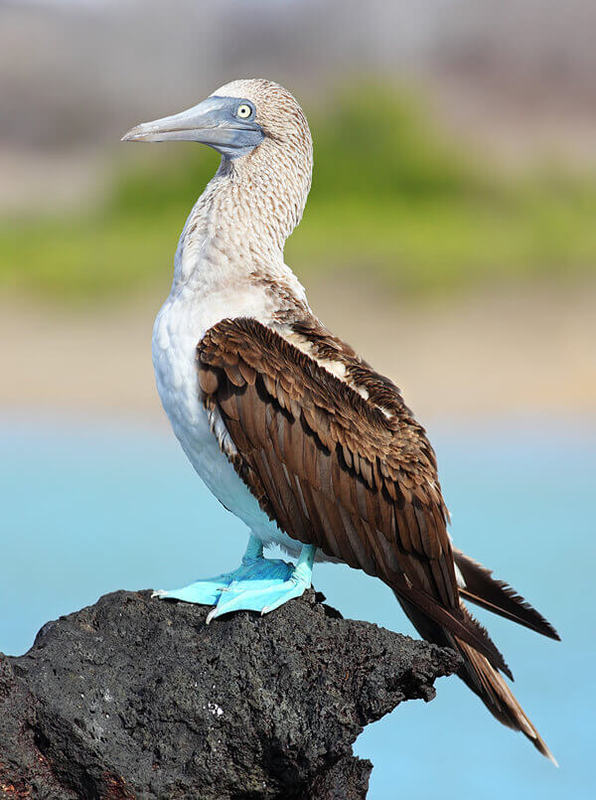 Almost 1,000 kilometres west of Ecuador, this group of islands boasts some 25 endemics – half of your trip list! The endemic list includes Galapagos Penguin, Galapagos Heron, Galapagos Hawk, Galapagos Dove, Galapagos Rail, Galapagos Mockingbird and Galapagos Flycatcher. Not surprisingly, birders tend to drop the ‘Galapagos’ bit. To see all of the endemics you will have to visit Fernandina, Floreana, Isabela, James, Santa Cruz, Hood, San Cristobal and Tower – all of which means this could be one of your most expensive holidays ever. The best bet is to join a birding tour and share the cost.
Almost 1,000 kilometres west of Ecuador, this group of islands boasts some 25 endemics – half of your trip list! The endemic list includes Galapagos Penguin, Galapagos Heron, Galapagos Hawk, Galapagos Dove, Galapagos Rail, Galapagos Mockingbird and Galapagos Flycatcher. Not surprisingly, birders tend to drop the ‘Galapagos’ bit. To see all of the endemics you will have to visit Fernandina, Floreana, Isabela, James, Santa Cruz, Hood, San Cristobal and Tower – all of which means this could be one of your most expensive holidays ever. The best bet is to join a birding tour and share the cost.
Other Target Species Include: Waved Albatross, Swallow-tailed Gull, Blue-footed Booby, Flightless Cormorant, Charles Mockingbird, Large, Medium and Small Tree- finches, Large, Medium and Small Ground-finches, Woodpecker Finch, Mangrove Finch, Warbler Finch, Hood Mockingbird and Lava Gull.
Costa Rica
Best Time to Visit: Late December to April
Target: 400 species
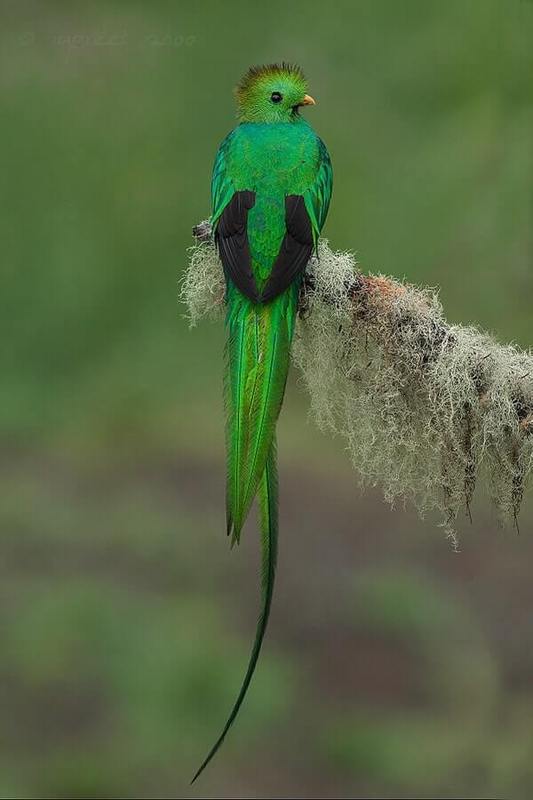 Well, if you did not think the last three were South America – this one is even less so, being Central America. However, it is safe, easy to navigate, and very rewarding. Most important of all, Costa Rica offers the a greater variety of birds for a country its size than anywhere else in the world. At just a fifth of the size of the UK, it has a checklist with over 840 species!
Well, if you did not think the last three were South America – this one is even less so, being Central America. However, it is safe, easy to navigate, and very rewarding. Most important of all, Costa Rica offers the a greater variety of birds for a country its size than anywhere else in the world. At just a fifth of the size of the UK, it has a checklist with over 840 species!
Starting at the capital, San Jose, there is plenty of good birding just a few minutes drive out of town. Because of the country’s small size, you can easily visit both the Pacific and Caribbean coasts, and a visit in October would coincide with both the rainy season, but also the migration of many North American species, including waders.
One of the most popular sites is the Monteverde Cloud Forest Reserve, where, with luck, you can obtain excellent views of the Resplendent Quetzal. However, this is just one of many mountain reserves covered in luxuriant growth, making Costa Rica a stunning country.
Venezuela
Best Time to Visit: December to March
Target: 500 species
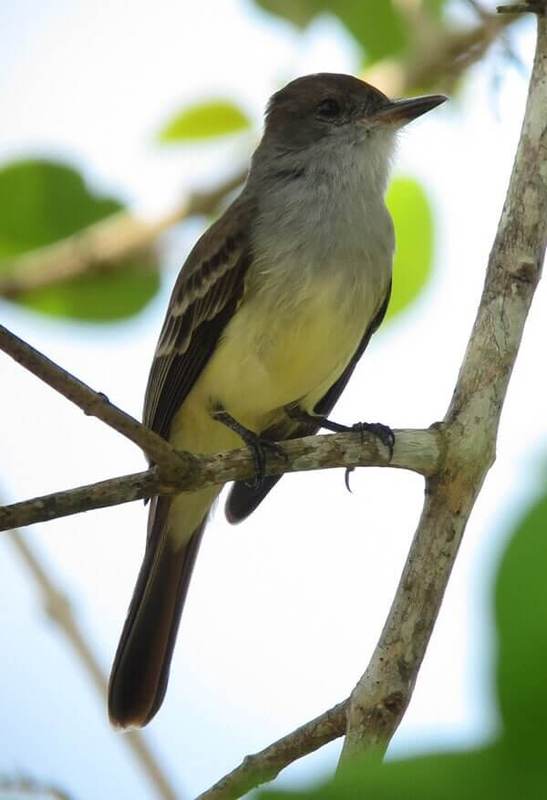 Compared to Costa Rica, Venezuela is quite different. At almost four times the size of the UK this amazing country can offer a trip list in excess of 600 species, but that is only for the experienced South American specialist, and one with unlimited stamina. The northern coast of the country offers some of the easiest birding, with subtropical and deciduous woodland on its mountain slopes, whilst the flat-topped mountains of the south-east are home to a wide variety of rare species including the elusive Harpy Eagle at the Imataca Forest Reserve. Venezuela has a bird list of over 1,350 species, of which some 41 are endemic to the country. In addition there are a similar number of species which are not endemic, but very hard to see elsewhere in South America.
Compared to Costa Rica, Venezuela is quite different. At almost four times the size of the UK this amazing country can offer a trip list in excess of 600 species, but that is only for the experienced South American specialist, and one with unlimited stamina. The northern coast of the country offers some of the easiest birding, with subtropical and deciduous woodland on its mountain slopes, whilst the flat-topped mountains of the south-east are home to a wide variety of rare species including the elusive Harpy Eagle at the Imataca Forest Reserve. Venezuela has a bird list of over 1,350 species, of which some 41 are endemic to the country. In addition there are a similar number of species which are not endemic, but very hard to see elsewhere in South America.
Other Target Species Include: Saffron-breasted, Yellow-faced and White-fronted Redstarts, Band-tailed Guan, Crested Spinetail, Fulvous-headed Tanager, Scissor-tailed Hummingbird, Venezuelan Flowerpiercer, Slaty-backed Hemispingus, Tepui Goldenthroat and Great Elaenia.
More about Keith











